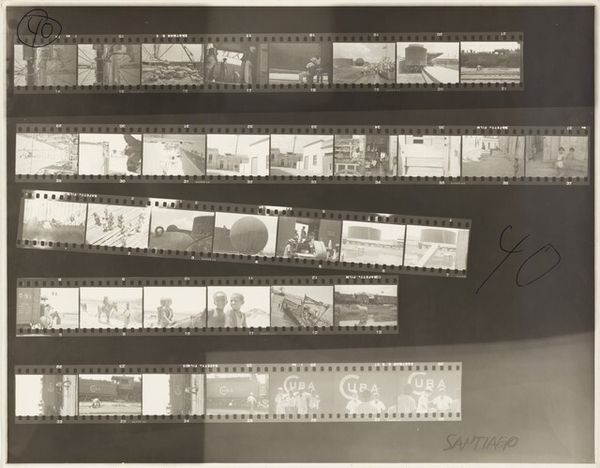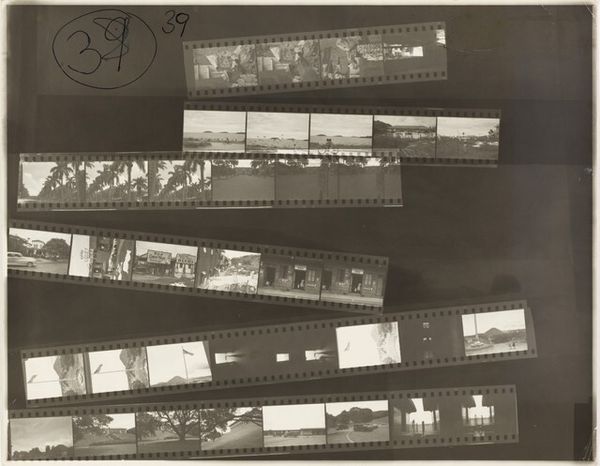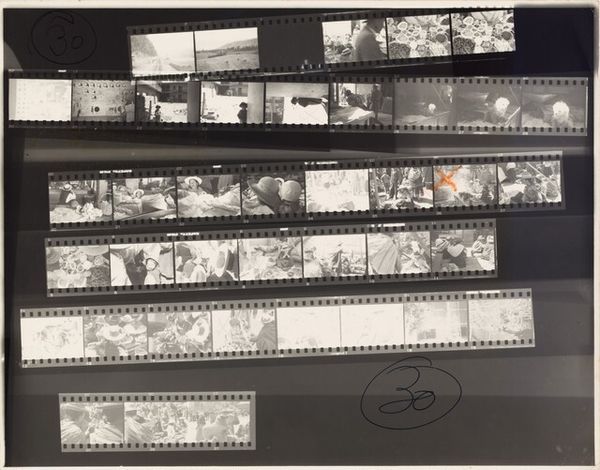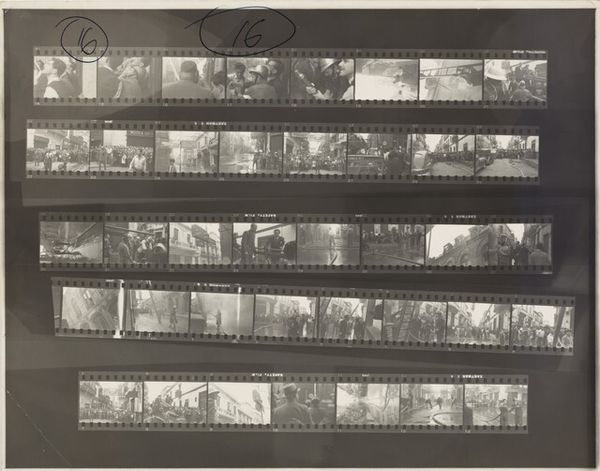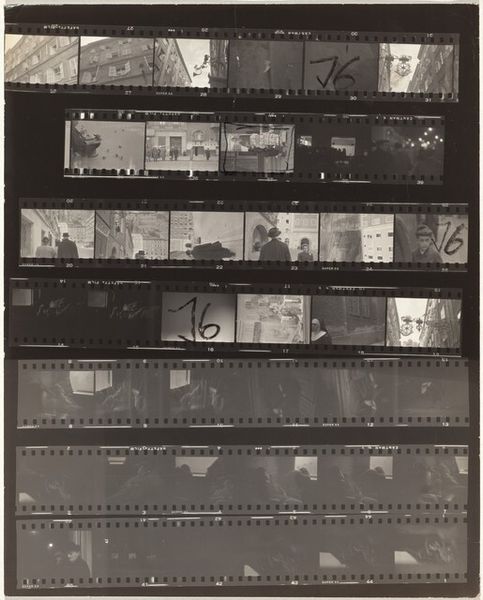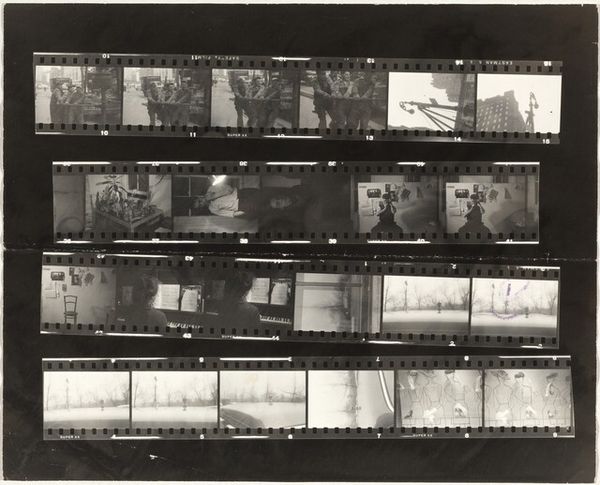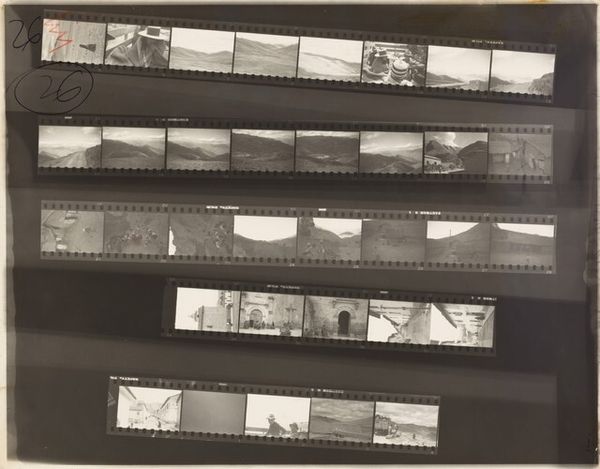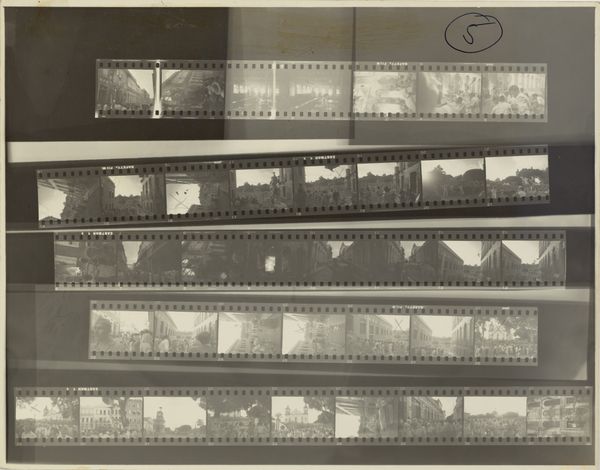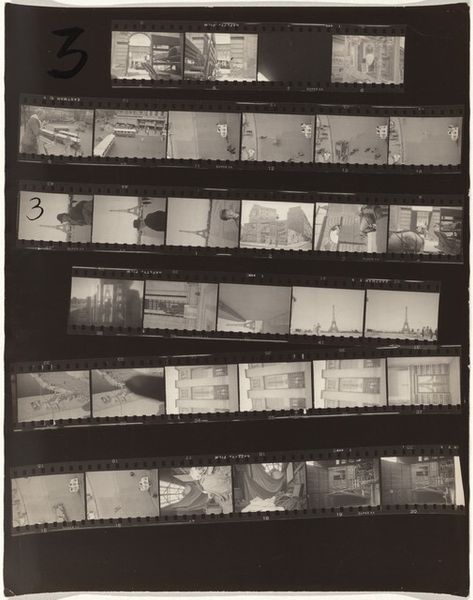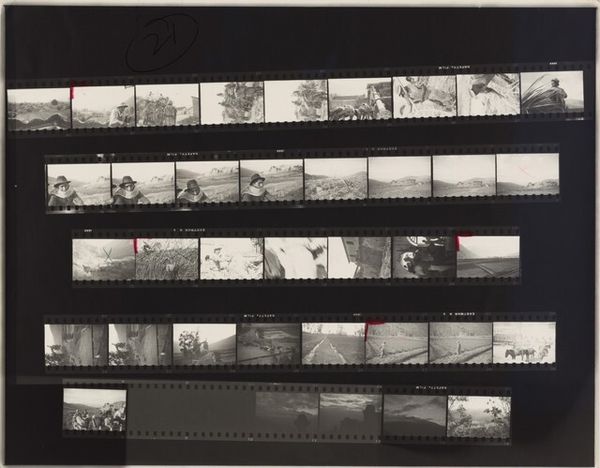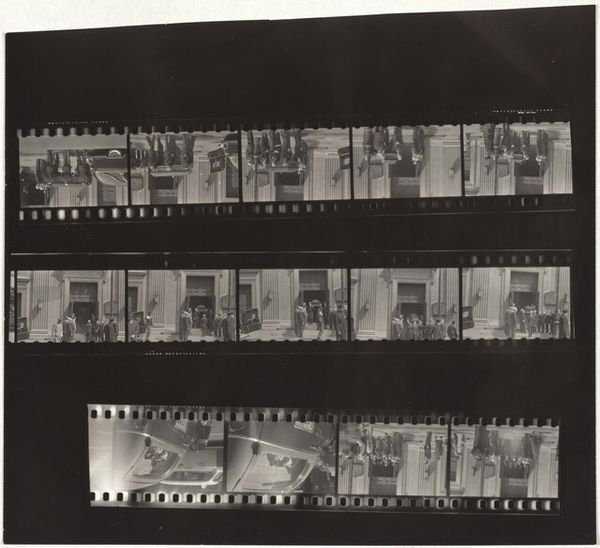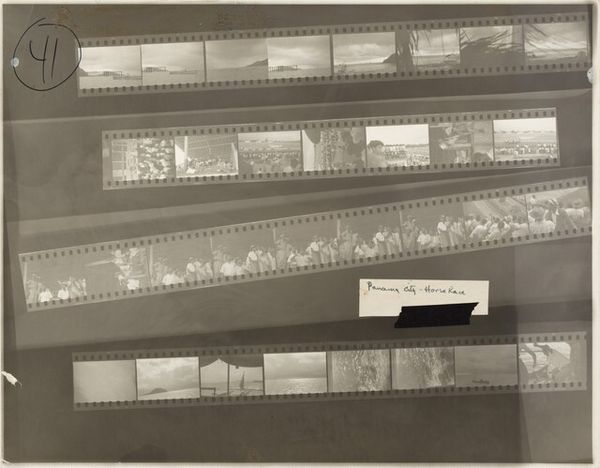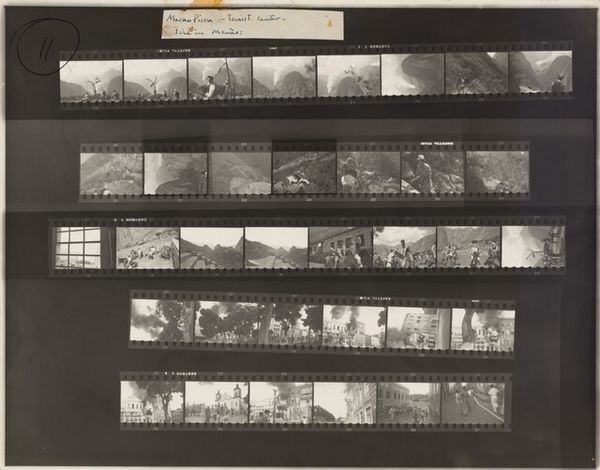
print, photography, gelatin-silver-print
#
portrait
#
print photography
# print
#
landscape
#
street-photography
#
photography
#
gelatin-silver-print
#
modernism
#
realism
Dimensions: sheet: 27.8 x 35.4 cm (10 15/16 x 13 15/16 in.)
Copyright: National Gallery of Art: CC0 1.0
Curator: Robert Frank's "Peru 14," a gelatin silver print from 1948, presents us with strips of black and white photographs, like contact sheets, capturing varied scenes. What’s your immediate reaction to this piece? Editor: It strikes me as very fragmented and immediate. Raw, even. You see the photographic process itself, the physicality of the film strip. There's a tension between these mundane interiors and travel photography—airplane wings over stark landscapes—all rendered in that classic silver gelatin texture. Curator: That rawness is key. Frank's work often challenges established photographic norms. The snapshot aesthetic became associated with the Beat Generation. The politics surrounding this kind of "documentary style" had to compete with what many regarded as an idealized portrayal of the time. The contact sheet format also opens up a space to read the photographs in relation, which could also add to the overall social commentary that it provides. Editor: Exactly. I think presenting the work this way makes the viewer conscious of the editing, the selecting and rejecting of images—the labor, essentially. Think of the darkroom work—the precision demanded by this technology to deliver that high tonal range, the way those sharp lines must be preserved. And then think of how this challenges a smooth, polished image that often characterized photography during that period. It reminds us of what's at stake in how we make images of social life and the world more broadly. Curator: He’s questioning the role of photography itself. By showcasing the process so openly, Frank subverts expectations. What kind of statement is Frank making by choosing not to edit these out or hide them? Editor: Perhaps it suggests an unwillingness to present a singular narrative, which would otherwise conceal that process and its material limitations. And I appreciate this presentation—you’re reminded of film's basis as something that's chemical, and that requires human skill and experience to craft an image. Curator: Precisely. In its time, that would be very unconventional, perhaps even deemed as "bad practice" by some formal photography circles. Today, Frank's approach seems very modern. It seems that in doing that, "Peru 14" provides insights into both the artistic choices as well as larger discussions of the social, material and political realities of its time. Editor: I completely agree. Thinking about the art in terms of materiality, like here, helps open it up and consider a greater scope of social processes surrounding it.
Comments
No comments
Be the first to comment and join the conversation on the ultimate creative platform.
